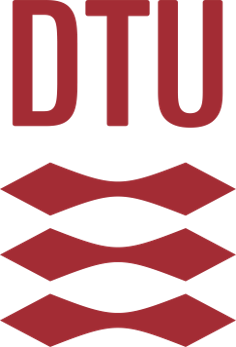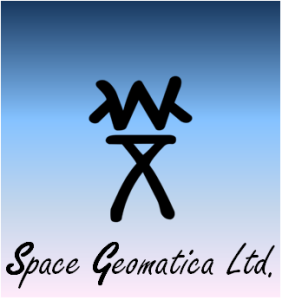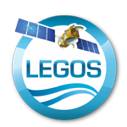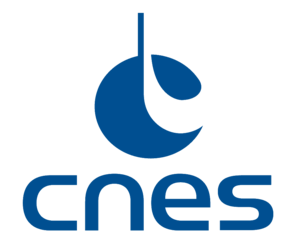Partners
The objective when forming the consortium was to take benefit of the background of each company, of their implication into other altimetry related projects (R&D activities and services for the European Commission).
CLS is identified as the consortium Leader.

Collecte Localisation Satellites (CLS)
Collecte Localisation Satellites (CLS) is a worldwide company and pioneer provider of monitoring and surveillance solutions for Earth since 1986. Its mission is to design and deploy innovative space-based solutions to understand our planet and manage its resources sustainably.
CLS is active in 5 strategic sectors:
- Maritime Surveillance
- Sustainable Fisheries Management
- Environmental Monitoring & Climate
- Energy & Mining
- Fleet Monitoring
CLS holds more than 30 years’ experience in environmental monitoring by remote sensing techniques. CLS has been acting continuously in Earth Observation (EO) projects providing services to French and European space agencies, CNES, ESA, EUMETSAT and European stakeholders like the European Union, through research programs, FP5, 6, 7, H2020 and through the operational Copernicus program. CLS has developed a particular expertise in the field of altimetry, being involved from the early design phases of ERS and TOPEX/Poseidon missions to the most recent altimetry missions like Sentinel-3, Sentinel-6 and the future SWOT mission. CLS has been developing its altimetry expertise in space mission design, instrument processing, algorithm development, operational system development and operations, mission performance assessment and higher-level data design, etc.

isardSAT
isardSAT Group (also known as isardSAT) is a group of R&D SMEs employing 35 staff, who provide, since 2006, engineering and scientific remote sensing answers to its clients with special attention to altimetry and passive microwave missions. The company has three main fields of activity:
Space & Technology : carries out scientific-technologic projects in the Earth Observation field, developing on-board and on-ground algorithms to process microwave instruments data.
Scientific Applications : performs studies for scientific applications with the data obtained by Earth Observation instruments. Application projects revolve around different hydrological applications.
Services: develops customised services that benefit from the usage of Earth Observation data.
isardSAT is involved in the design, calibration and maintenance of civil remote sensing instruments, ranging from the development of algorithms for data processing to calibration after launch and maintenance of the instrument's hardware. isardSAT also performs studies for scientific applications with the data acquired by these instruments.

DTU
The Technical University of Denmark (DTU) is the largest technical university in Denmark. DTU Space is one of 19 departments at DTU, with special roles in serving innovation including many matters related to the Danish Membership of ESA. DTU-Space carries out numerous contracts on behalf of both ESA and NASA both in the domains of space hardware, application projects, and research. DTU-Space also takes part in many EU projects, national and international government projects, and research projects funded through research council grants.
DTU-Space is currently organized in five research sections:
- Astrophysics and Atmospheric Physics (from former Danish National Space Centre)
- Microwaves and remote sensing (original DTU department)
- Measurement and instrumentation (original DTU department)
- Geomagnetism (ESA-SWARM focus)
- Geodesy and Earth observations (merger of the two former departments Geodesy and Geodynamics)
GEO has had numerous ESA and EU contracts over the years, relating to use for satellite data processing for cryosphere and hydrology applications, geodesy and gravity field mapping. Major projects include lead of the ESA Ice Sheets CCI project 2012-18, HYDROCOASTAL inland water, and lead of numerous ESA and EU campaigns in Greenland, the Arctic Ocean and Antarctica for more than 20 years

SPACE GEOMATICA
Space Geomatica P.C. has been established in 2011 as an independent Small-Medium-Enterprise. It is specialized in a variety of activities, i.e., engineering, space, satellite calibration, altimetry, etc.
The company aims at exploiting new engineering topics and technologies to systematically monitor novel scientific instrumentation and techniques and to develop innovative applications through domestic, European and international Research projects. Core activities and consulting services of Space Geomatica P.C. include:
- Processing of satellite altimetric data and determination of relevant oceanographic, geophysical and environmental information;
- Satellite altimeter calibration/validation.
- Surveying/Global Navigation Satellite Systems.
- Networks for Control, Micromovement Control of deformation.
- GNSS systems & ground-related precise geodetic technologies.
- Research and development.
- Software Engineering.
- etc
Space Geomatica has a long-term and strong collaboration with the Geodesy and Geomatics Engineering Laboratory (GeoMatLab), Technical University of Crete, Greece (TUC). GeoMatLab undertakes world-class research on satellite geodesy and altimetry. The GeoMatLab's geomatics sections perform research on an integrated approach of measurement, analysis, management, storage and display of the descriptions and location of Earth-based data. Statistical analysis and quality control of remote sensing and geodetic data is performed to assure quality of the derived results.

RAME
Radio Analog Micro Electronics srl, RAME in short was established in September 2014 as High-Technology Content Innovative start-up company based in Rome, Italy. The current legal status is limited liability research company Small and Medium Enterprise (Piccola e Media Impresa in Italy). RAME srl is active in providing semiconductor solutions, system integration and sensors development in the segments:
- AeroSpace & Defence
- Automotive
- Consumer Electronics
- Telecommunications
- Healthcare
Regarding the space industry, RAME started to provide design and is strictly committed since its inception, maturing experience in space technologies, standing as a reliable partner for Space Agencies, satellite operators and principal industries. The Company has an outstanding expertise in research, development, engineering, simulation, prototyping, integration, testing, validation, small scale production for Space & Ground system and components, owning a significant number of international patents on antennas, radars, scientific software and Digital Signal Processing.

LEGOS
LEGOS is a multi-disciplinary research organization, concerned with environmental research centered on physical oceanography (large scale and coastal), marine geochemistry and biogeochemistry, spatial hydrology and the dynamics of polar ice sheets and the polar oceans. These research themes are linked by an observational approach using remote sensing from satellites.
Scientist and engineers of LEGOS have been involved in the development and design of satellite altimetry since the early 1980s, for applications in oceanography, hydrology, cryosphere and climate science. Involved in Seasat and Geosat missions, they further served as PI of Topex/Poseidon, ERS-1/2, Jason-1/2/3, Envisat and Altika/Saral missions.
LEGOS hosts several 'national observation services', among them the CTOH (Centre of Topography of the Oceans and the Hydrosphere). Established in 1989, the CTOH is an INSU Observational Service, supported by the Centre National de la Recherche Scientifique (CNRS), Centre National d'Etudes Spatiales (CNES), Observatoire Midi-Pyrénées (OMP) and Institut de Recherche et de Développement (IRD). The CTOH is dedicated to satellite altimetry studies. The CTOH aims to help scientific users develop new altimetric products and applications. Within this framework, the CTOH maintains homogeneous altimetric data bases for the long-term monitoring of sea level and ocean currents, lake and river levels, the cryosphere, and climate. The CTOH works in close collaboration with scientific research groups at LEGOS to develop new altimetric products, for coastal sea level.
To summarize, the LEGOS participates deeply to the design and scientific application developments of future space missions for the observation of the ocean, the cryosphere and the hydrosphere. It is also a major actor in the field of satellite calibration / validation activities.

AWI
The Alfred Wegener Institute for Polar and Marine Research (AWI) research mission is to improve the understanding of ocean-ice-atmosphere interaction, the animal and plant kingdoms of the Arctic and Antarctic and the evolution of polar continents and seas. AWI’s activities are guided by the joint research program “Changing Earth - Sustaining our Future” in which it coordinates the topic “Ocean and cryosphere in climate”. Within the climate department, the sea-ice physics section is applying, improving, and develop various methods to study sea ice and snow processes in both hemispheres, including the interaction of atmosphere and ocean. Remote sensing methods, specifically satellite radar altimetry, play a substantial part in this effort and AWI has a long history in the development and validation of sea-ice remote sensing processing chains and in transforming data products into advances in the understanding of the polar regions. Members of the sea-ice physics section are involved into generating the sea-ice thickness climate data record of the ESA Climate Change Initiative (CCI) and the Copernicus Climate Change Services. AWI also operationally generates ESA data sets, specifically the SMOS, CryoSat-2 and merged SMOS/CryoSat-2 sea-ice thickness data sets.
AWI also has the capability and long history in implementing airborne and ship-based campaigns in the sea-ice covered regions in both hemispheres. Results from these activities, in part dedicated satellite validation campaigns, have contributes substantially to the data base of sea-ice validation and reference measurements. The joint expertise in remote sensing method development as well as in-situ data collection has allowed AWI researchers to significantly contribute to the projects with a focus on evaluating and improving sea-ice remote sensing products (ESA Arctic+, ESA Polar+, ESA CryoTEMPO), as well as science experts in a consultant role (ESA FDR4ALT, CRISTAL SIR). AWI members also contribute frequently to quality working groups of SMOS, CryoSat-2 and Sentintel-3.

CNES
Since its creation in 1961, CNES has pursued an active policy of disseminating space culture among young people, teachers and mediators of scientific culture. Objective: to attract young people to scientific and technical careers in particular by offering them to participate in various projects based on space data or tools. At the crossroads of research and industry, the French national space center proposes and implements France's space policy, within a national, European or international framework. With its 4 centers and 2,500 employees, CNES designs, develops and operates space projects: launchers, space probe satellites and associated ground segments. In a rapidly changing global environment, both in terms of space players and the possible uses of space missions, CNES is preparing for the future in the field of space missions and applications. Its action is structured around five main areas of intervention: Ariane, Sciences, Observation, Telecommunications and Defense.
CNES has a very long experience in satellite altimetry systems and is a world leader for those missions. Since ERS1 launched in 1991, up to Sentinel-6MF launched in late 2020 and the preparation of SWOT mission, CNES has been involved in the design of on-board instruments and platforms, system activities, algorithm processing chains developments, validation of the mission products among many other related activities. CNES altimetry team is involved in all international groups: OSTST, S3VT, S6VT, S3QWG, etc.